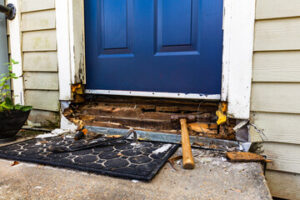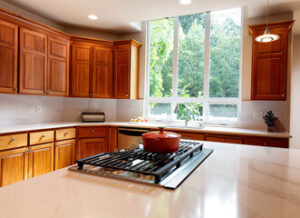Pests are organisms that damage or spoil crops, feed on humans and animals, contaminate food or water, or threaten human health. Pest control measures include prevention, suppression, and eradication.
Pest identification is an important first step in developing a pest control strategy. Monitor insect, mollusk, and vertebrate pests by trapping or scouting; monitor plant disease organisms through visual inspection and sampling. Contact Pest Control Chesterfield MO now!

Insects are small, wingless insects with flat bodies that allow them to crawl in tight spaces. They are most active at night, searching for a host to bite, and usually only remain in beds or other sleeping areas. They can, however, travel long distances in search of a meal. They hide in secluded places like headboards and deep in upholstered furniture but will also conceal themselves amongst the clutter.
A bed bug infestation is difficult to eradicate. Once established, the pests will breed quickly and go undetected for months. A pregnant female can lay hundreds of eggs, each about the size of a speck of dust. These eggs hatch into nymphs that shed their skins five times before maturing. Each generation takes from a month to a year to complete their life cycle.
While there are several tools and products designed to treat bed bug infestations, most require dismantling a room or home in a “search and destroy” manner in order to find and eliminate every insect. This is a very time-consuming, expensive, and labor-intensive process.
Treatments for a major bed bug outbreak often involve removing and discarding mattresses, box springs, and other large pieces of furniture, as well as personal belongings such as stuffed animals. In addition, all bedding and clothing should be washed in hot water and dried in a clothes dryer. The use of bleach, alcohol, cigarette lighters, and other common household items to control bed bugs is discouraged, as they are ineffective and may cause fires.
Prevention measures include avoiding second-hand furniture and carefully inspecting it before bringing it into a home. Keeping rooms and hallways clear of clutter allows for more thorough inspections and lessens the hiding places where bed bugs can hide. It is important to seal cracks and holes around the home to prevent termite entry, as well.
In multi-unit buildings, the use of regularly scheduled building-wide pest control treatments can help to control termite and bed bug infestations. Property managers should rely not only on tenant complaints to detect and treat problems, but should also conduct regular inspections of the entire structure.
Termites
Termites are among the most destructive wood-destroying pests for homes. They often go unnoticed for years and cause significant damage before they are detected. When they do, they are usually in the wall studs, rafters and beams that support a home’s structure.
While these insects fill a necessary role in nature by breaking down dead vegetation and returning nutrients to the soil, they can also cause serious structural problems for homeowners when they infest houses. The first sign of a termite infestation is typically the discovery of wood that has become hollow inside. Other indicators include mud tubes that connect the termites’ underground nest to wood in contact with the ground.
The termites that most commonly infest homes are the subterranean variety. These insects are drawn to moisture, wood in contact with house foundations and cracks in the exterior of buildings. They are also attracted to firewood stacked against houses and untreated lumber used in construction projects. Once they find a suitable site, they can tunnel underneath the exterior of a home and infest walls, cabinets and other interior structures.
Subterranean termite colonies consist of workers, soldiers and reproductives. Workers are creamy colored and can be seen when a mud foraging tube is broken or infested wood is cut open. Swarmers are winged, reproductive members of the colony that resemble flying ants. Swarmers leave the original colony to form new ones and mate with others. After mating, the swarmers shed their wings and become visible to homeowners.
While it may be tempting to hire a local company with a good reputation and a low price to handle a termite problem, an ounce of prevention is worth a pound of cure. The most effective way to protect a property from a termite infestation is to install termite bait stations. The stations contain a slow-acting termiticide that the termites ingest when they visit them. The chemical slowly poisons them and eventually weakens their ability to molt and grow.
When choosing a company to install and maintain termite bait stations, make sure the technicians are licensed and certified. Ask to see their pesticide applicator licenses and proof of insurance. Additionally, request references from previous customers and check the company’s credentials. Finally, be sure to read the product label of any termiticide that is used.
Rodents
Rodents invade homes and buildings looking for food, water and shelter during cooler weather. Once inside, they cause damage by chewing electric wires and contaminating food, kitchen surfaces, clothing, and pets’ feces with potentially deadly diseases like Hantavirus Pulmonary Syndrome, Leptospirosis, Plague and Salmonella.
Rats and mice can squeeze through openings the size of a dime, so it’s important to take precautionary measures against their entry into your home. Check your home and outdoor areas regularly to make sure doors, windows and screens are secure. Remove debris from the yard that could provide cover for rodents. Cover garbage cans at all times and store pet food in containers that are rodent-proof. Don’t leave pet dishes out overnight, and if you have fruit trees, collect and compost fallen fruit regularly.
A pest control specialist can help you prevent or treat a rodent infestation. They will inspect your property and find indicators of a problem, then recommend targeted solutions that are effective for your specific pest. They’ll use traps, baits, and other methods to effectively remove the animals from your home. They’ll also instruct you on how to properly dispose of dead rodents so they don’t pose a health risk to family members, pets or native wildlife.
Once the infestation is under control, pest control experts will work to prevent it from recurring. They’ll look for ways that rodents got into your home and seal those entries. They’ll also inspect your landscaping to ensure that it’s not providing rodents with cover or food sources. They can recommend changes such as removing tall grass, stacking fire wood 18 inches off the ground, and trimming bushes and vines.
To prevent future rodent problems, you can keep food in sealed containers and wipe up spills immediately. You can also plant mint, spearmint and eucalyptus around your home to deter rodents from entering. Also, a good strategy is to make your home and garden less attractive to rodents by keeping garbage cans tightly covered at all times, removing any uneaten pet food from the yard or garden, picking up fallen fruits and vegetables regularly, and cutting back overgrown weeds and vegetation.
Other Pests
While we usually think of pests as a nuisance that invades our homes, they can be just as troublesome in schools and offices. In addition to the damage they do to plants, their presence can be a health hazard and distract students and staff from learning. Rodents and cockroaches can carry diseases that cause serious illness, while allergens such as flies, mosquitoes, and dust mites trigger asthma and other respiratory conditions.
The best way to control these pests is to prevent them from entering the home or office in the first place. Cleanup is important both inside and outside the property to reduce food, water, and shelter sources. Make it a practice to wash dishes daily, store foods in sealed containers, and keep garbage cans and compost piles away from the house. Regularly sweeping, mopping, and vacuuming can help eliminate crumbs, spills, and odors that attract pests.
Remove Wooden Debris
A wooded area next to or near a structure is an invitation to rodents, ants, and other insects. Keep tree limbs and firewood at least 18 inches away from the building, and remove brush and debris that could provide nesting material or shelter. Seal cracks in foundation and around windows and doors, and replace worn weather stripping.
Keep Yards Clear
Overgrowth of vegetation provides a hiding spot for many species of pests, and the damp ground can provide an ideal breeding place for disease-carrying fungi and spores. Weeds rob the garden of water and nutrients, while some are host to pests like worms, ants, flies, and roaches. Regular clearing, mowing, and mulching are essential for keeping lawns and gardens healthy and attractive.
Eliminate Sources of Water
Most pests enter homes in search of three things: food, water, and shelter. By eliminating these attractants, you can dramatically decrease the number of pests in your home or office.
In commercial settings, food and waste sources can include sinks in employee break rooms, cabinets, and shelves. In addition, cluttered product storage areas are favorite hiding spots for pests. Clean and organize these areas, and encourage staff to wipe down countertops and mop floors regularly.

